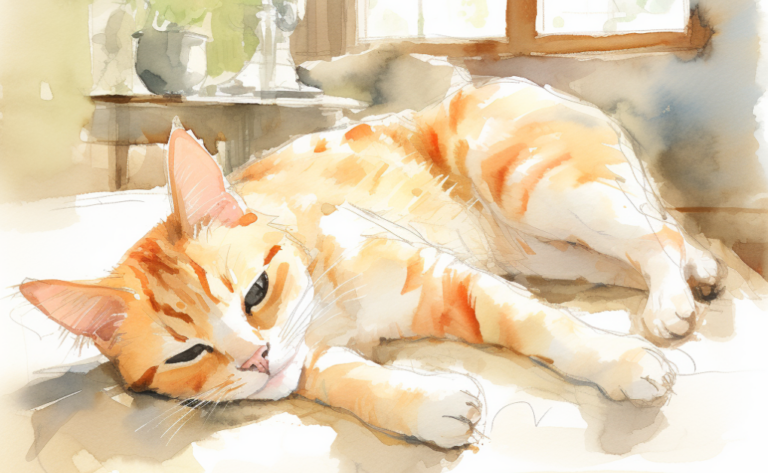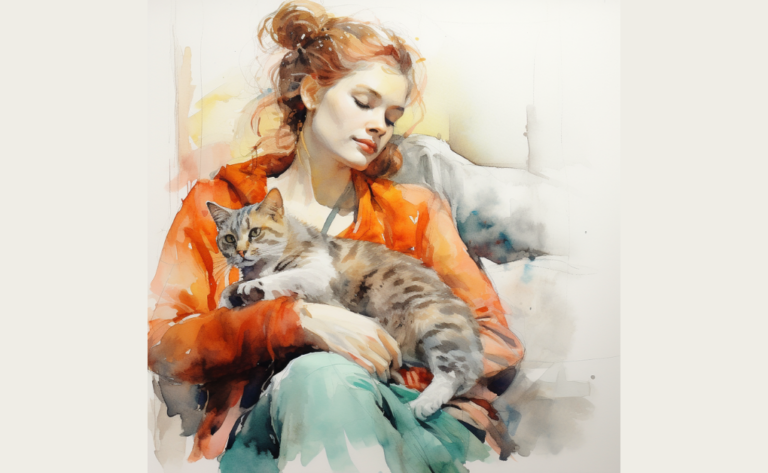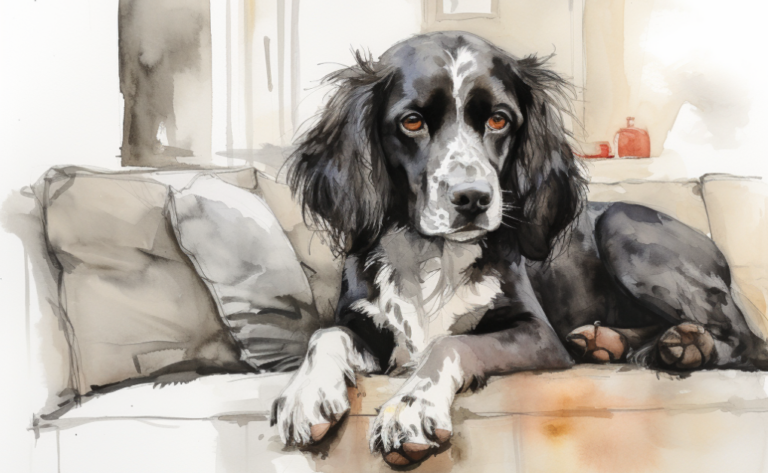Canine Hip Dysplasia
What is it?
How is it Treated?
Breed Predispositions
Labrador Retrievers
German shepherds
Golder retrievers
Doberman pinscher
Introduction
Ever since adopting her lovable Great Dane, Jasper, Sophie had been enamored with his gentle nature and incredible size. As Jasper grew, however, she noticed that he appeared to have difficulty moving his hind legs, often showing signs of discomfort when getting up from a lying position. Concerned about her gentle giant’s well-being, Sophie consulted her veterinarian, who diagnosed Jasper with canine hip dysplasia—a common but potentially debilitating condition in dogs.
Hip dysplasia, often referred to as HD, is a health condition where the dog’s hip joint becomes dislocated due to abnormal hip socket formation and irregular bone growth around the hip joint, typically a ball and socket structure. It ranks as one of the dogs’ most widespread orthopedic ailments, impacting their hip function.
While hip dysplasia can affect any dog, it is notably more common in larger breeds such as German Shepherds, Labrador Retrievers, Golden Retrievers, Boxers, Doberman Pinschers, Rottweilers, and Pit Bulls. However, it’s worth noting that the condition also appears in smaller breeds, with French Bulldogs being one of them. Golden Retrievers, in particular, have been frequently diagnosed with this condition. As a result of hip dysplasia, many dogs can develop hip arthritis over time, causing pain and reduced mobility.Types of Hip Dysplasia in Dogs
There are two types of hip dysplasia: degenerative and juvenile hip dysplasia.
Degenerative Hip Dysplasia
This condition variant arises when the cartilage cushions the ball and socket of the hip joint and wears away, leading to hip joint laxity. This degeneration is a joint disease that often becomes noticeable in many dogs once they reach their senior years, typically beyond the age of ten. However, signs of hip dysplasia can occur at birth, with most puppies demonstrating some degree of this condition, but only about 1% develop severe symptoms.
Degenerative hip dysplasia is prevalent in large-breed dogs. It is frequently seen in breeds such as Great Danes, Doberman Pinschers, German Shepherds, Rottweilers, Saint Bernards, Mastiffs, Bullmastiffs, Boxers, Pit Bulls, and American Staffordshire Terriers. Large and giant breed dogs are particularly prone to this condition due to their size and weight.
Juvenile Hip Dysplasia
This condition occurs earlier in life and affects the young dog’s hip joint development. The hip socket, or acetabulum, is inadequately deep to allow the head of the thighbone (femoral head) to fit properly. This mismatch results in varying degrees of hip laxity, from mild to severe, causing looseness in one or both hip joints. This variant of hip dysplasia often becomes evident in adult dogs as they age and the condition progresses.
Causes of Canine Hip Dysplasia
Hip dysplasia is a hereditary and developmental condition in dogs, marking the abnormal formation of the hip joint, commonly referred to as hip dysplasia in the dog’s hip. As dog’s age, this can develop into degenerative joint disease, such as arthritis, leading to discomfort and mobility challenges. Several factors contribute to hip dysplasia, including:
- Genetic Predisposition: Genetics plays a significant role in hip dysplasia, with some breeds being more susceptible. Larger dog breeds, such as the Labrador Retriever, Golden Retriever, German Shepherd, Great Dane, and Rottweiler, are at higher risk. However, it’s important to note that even smaller breeds can succumb to this condition.
- Rapid Growth: Puppies that experience swift growth may have an elevated risk of hip dysplasia. Diets that promote speedy growth or excessive weight gain can exert extra pressure on the developing joints, leading to the abnormal development known as hip dysplasia.
- Nutrition: Unbalanced nutrition, especially during the critical growth phase of a puppy, can lead to hip dysplasia. Diets too rich in calories, calcium, or phosphorus can contribute to atypical bone development and joint behavior.
- Obesity: Overweight dogs are more likely to develop hip dysplasia due to the excess weight bearing down on the joints, leading to abnormal wear and tear and, ultimately, degenerative joint disease.
- Exercise: While moderate exercise contributes positively to a dog’s overall health, strenuous or high-impact exercise during a puppy’s growth phase can enhance the risk of hip dysplasia. Running on hard surfaces or jumping from heights can impose excessive stress on a dog’s joints, resulting in joint abnormalities.
- Environmental Factors: Conditions such as cold and damp environments can intensify joint pain in dogs with hip dysplasia, potentially aggravating the condition.
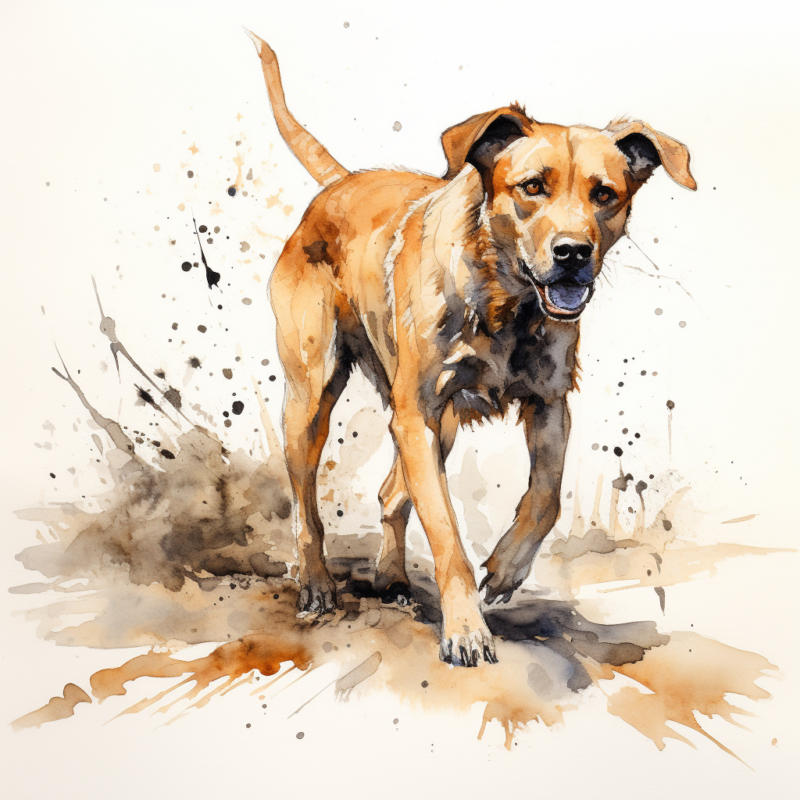
Hip dysplasia is an abnormal development strongly linked to genetic factors. However, responsible breeding practices, proper nutrition, weight management, and appropriate exercise can assist in minimizing the risk of young and mature dogs developing this debilitating condition.
Signs of Hip Dysplasia in Dogs
There are several manifestations of hip dysplasia in dogs, including juvenile and mature forms. These two forms share some similarities, and they can appear at any stage of a dog’s life but also present unique characteristics. Here’s a closer look at the symptoms of hip dysplasia in both forms:
Juvenile Form
- A ‘bunny hopping’ gait
- Lameness in the rear leg or legs
- Challenges in rising from a resting position
- A noticeable clicking sound from the hips when the dog is walking or standing
- A shift of weight to the front limbs
- A limited ability to exercise for extended periods
It’s essential to note that young dogs rarely show overt signs of hip dysfunction, and many can recover from mild hip dysplasia. This improvement occurs because the body produces fibrotic tissue to stabilize the loose joints. While approximately 30 percent of dogs might require additional treatment later in life due to severe hip dysplasia, many dogs can manage without further intervention.
Mature Form
- Progressive lameness in the rear limbs
- A ‘bunny hopping’ gait
- Lameness following exercise
- Loss of muscle mass in one or both rear limbs
- Challenges in performing activities such as jumping or climbing stairs
These clinical signs vary in their degree of hip laxity and indicate that the dog is experiencing a painful condition, often secondary to severe hip dysplasia. Therefore, recognizing these symptoms of hip dysplasia is essential for initiating timely intervention and providing relief from the pain from hip dysplasia that dogs must endure.
Diagnosis of Hip Dysplasia in Dogs
Identifying hip dysplasia in dogs entails a comprehensive approach, combining medical history analysis, physical assessment, and imaging techniques to determine the condition’s severity. The typical procedure for diagnosing hip dysplasia in dogs involves the following stages:
Medical History
The veterinarian will gather information about the dog’s breed, age, and any observed symptoms like discomfort or mobility difficulties. This data enables the veterinarian to establish if the dog is vulnerable to hip dysplasia and gauge the severity of the potential condition.
Physical Examination
The veterinarian conducts A thorough physical examination and checks for indications of pain, stiffness, or a diminished range of motion in the dog’s hips. They may also carry out specific evaluations, such as the Ortolani or the Bardens test, designed to check for joint laxity and hip dysplasia.
Radiographs (X-rays)
Employing imaging techniques is critical in diagnosing hip dysplasia since it enables the veterinarian to visually examine the hip joint and assess its extent. For accurate results, X-rays are taken while the dog is sedated or anesthetized to ensure the proper positioning. These images assist the veterinarian in determining the degree of joint laxity, the presence of arthritis, and any alterations to the bone structure of the hip joint.
OFA (Orthopedic Foundation for Animals) Evaluation
In some instances, mainly when it concerns breeding, the dog’s X-rays may be forwarded to the Orthopedic Foundation for Animals (OFA) for a professional assessment and grading of hip dysplasia. The OFA employs a standardized grading system to ascertain the severity of hip dysplasia and provides certification for dogs with normal hip function.
PennHIP Evaluation
An alternative method to assess hip dysplasia is the PennHIP evaluation, which measures joint laxity more accurately than traditional X-rays. This technique uses three different radiographic views and a specialized device called a distractor to measure the degree of joint laxity. The results are expressed as a distraction index (DI), with a lower DI indicating a tighter and healthier hip joint.
Early diagnosis and intervention are crucial in managing hip dysplasia in dogs, as timely treatment can help to slow down the progression of the condition and improve the dog’s quality of life.
Treatment Options for Hip Dysplasia in Dogs
Different therapeutic strategies are employed to manage hip dysplasia in dogs, mainly depending on the disease’s severity, age, body weight, and overall health status. In most cases, veterinarians may propose a blend of medical treatment, weight regulation, physical therapy, and surgical intervention to alleviate symptoms and enhance the dog’s quality of life. Below are the standard treatment methods for hip dysplasia in dogs:
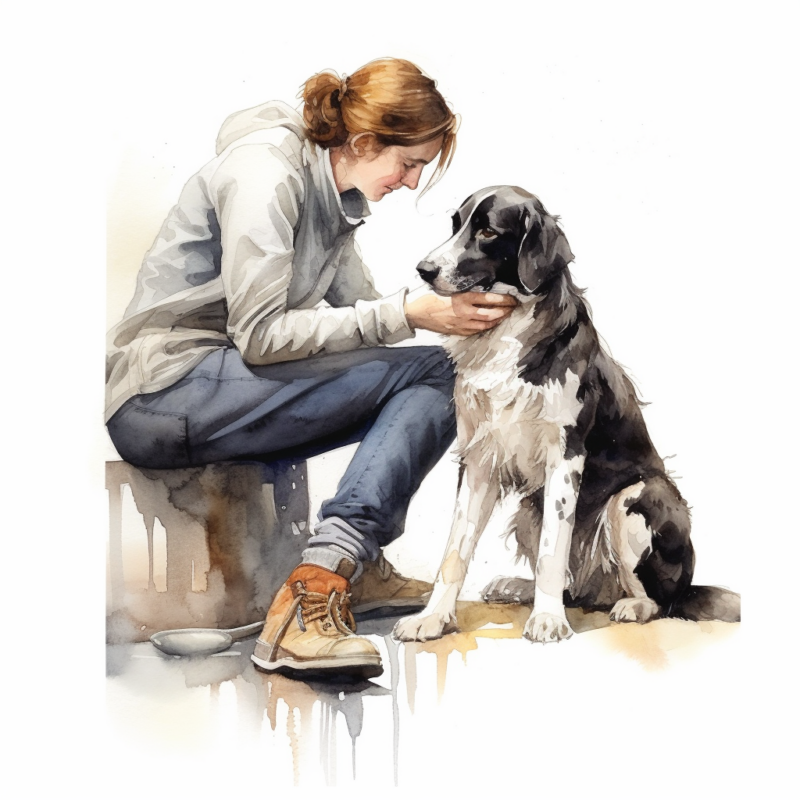
Surgical Intervention
Surgical intervention may be recommended in more severe cases of hip dysplasia or when conservative management is insufficient. If successful, only 30% of young dogs treated this way will need advanced therapies later in life. There are several surgical options for hip dysplasia in dogs, including:
- Triple Pelvic Osteotomy (TPO): This surgical option benefits young dogs with minimal joint damage. The veterinary surgeon realigns the hip joint by making three incisions in the pelvis and rotating the acetabulum to provide better coverage for the femoral head.
- Femoral Head Osteotomy (FHO): This procedure, also known as FHO surgery, involves the removal of the femoral head, the ball-like part of the femur that connects to the hip joint. The body consequently forms a “pseudo-joint” composed of scar tissue, which can alleviate pain and improve mobility.
- Total hip replacement (THR): This hip dysplasia surgery replaces the damaged hip joint with an artificial one, much like hip replacement surgery in humans. This surgical option provides the best long-term outcome for dogs with severe hip dysplasia, though it’s also the most invasive and expensive.
- Juvenile Pubic Symphysiodesis (JPS): This procedure is typically performed on young puppies up to 5 months old, which allows their hips to develop more normally and circumvent potential complications later in life. This surgery prematurely fuses the symphysis, leading to the rotation of the developing hip sockets into a more aligned position.
Prompt intervention and a holistic treatment plan are vital for managing dog hip dysplasia and preserving their quality of life. Working closely with a veterinarian is crucial to determine the most suitable treatment options for each dog.
Conservative Treatment
- Physical therapy comprises strengthening exercises to bolster weak muscles and improve the range of motion. Additionally, this form of exercise aids in averting future complications associated with hip dysplasia.
- Acupuncture is a traditional Chinese medical practice used to treat various conditions for centuries. Recently, it has been gaining popularity as a treatment for canine hip dysplasia.
Some scientific evidence supports using acupuncture for treating hip dysplasia in dogs. For example, a study published in the Journal of Veterinary Medicine found that acupuncture effectively reduced pain and improved mobility in dogs with hip dysplasia.
If you are considering acupuncture to treat your dog’s hip dysplasia, consult a qualified veterinarian or acupuncturist.
- Medication can alleviate symptoms, particularly when the dog suffers extreme pain. Medications range from pain relievers, NSAIDs (nonsteroidal anti-inflammatory drugs), joint supplements, and corticosteroids to opioids. However, some drugs can cause side effects like vomiting, diarrhea, constipation, and drowsiness.
- Supplemental feeding is another option for dogs suffering from hip dysplasia. Supplemental feeding aims to reduce weight gain and bone density loss. Supplemental feedings should only be considered after consulting with a veterinarian.
Many diets are available for dogs with hip dysplasia, including grain-free, gluten-free, and hypoallergenic diets. Grain-free diets contain fewer carbohydrates than regular diets, making them better choices for dogs who experience gastrointestinal issues. Gluten-free diets are typically made from rice, corn, potato starch, soy protein, and tapioca. Hypoallergenic diets contain wheat, barley, rye, oats, milk, eggs, fish, shellfish, peanuts, tree nuts, and sesame seeds.
- Joint supplements are beneficial as they supply essential nutrients (typically glucosamine and chondroitin) that support healthy joint function and alleviate inflammation and pain associated with hip dysplasia. Joint supplements present a safe and effective way to manage canine hip dysplasia.
Prevention of Hip Dysplasia in Dogs
Prevention of hip dysplasia in dogs is a multifaceted process encompassing genetic, nutritional, and lifestyle aspects. While not every instance of hip dysplasia can be forestalled, dog owners can undertake specific steps to mitigate the risk and foster the healthy development of the hip joint, which is a ball and socket structure. Here’s how to potentially prevent hip dysplasia, which is notably common in large-breed dogs:
Prudent Breeding Practices
One of the most impactful methods to prevent hip dysplasia is breeding dogs with robust hip health. Breeders should conduct hip evaluations like those offered by the Orthopedic Foundation for Animals (OFA) or PennHIP tests. This ensures only dogs with good hip conformation are chosen for breeding. In addition, steer clear of buying puppies from breeders who fail to provide proof of hip evaluations for both parental dogs.
Appropriate Nutrition
A balanced, age-suitable diet is vital for a dog’s healthy hip development. Overfeeding can result in rapid growth and obesity, escalating the risk of developing hip dysplasia. It’s recommended to consult your veterinarian to determine the best options for your dog’s diet and portion sizes based on breed, age, and activity level.
Weight Control
Ensuring your dog maintains a healthy weight throughout life is crucial to preventing undue stress on the hip joints. Obesity can worsen hip dysplasia and lead to other joint issues. Consequently, regular exercise and portion control become critical factors in managing your dog’s weight.
Appropriate Exercise
Regular, low-impact exercise can assist in strengthening your dog’s muscles and preserving joint health. Swimming, walking, and controlled leash play offer exercise without imposing excessive stress on the hip joints. High-impact activities such as jumping and running on hard surfaces should be avoided, especially for young, growing dogs.
Environmental Adjustments
Providing a comfortable, supportive sleeping area for your dog can lessen the stress on their joints. Orthopedic dog beds or cushioned surfaces can help relieve pressure on the hips. Additionally, reducing the use of stairs and providing ramps or steps for entry and exit from vehicles can minimize joint strain in dogs predisposed to hip dysplasia.
While entirely preventing hip dysplasia in dogs is not always feasible, adhering to these guidelines can help lower the risk and foster healthy hip development. Prompt detection and intervention are essential for managing hip dysplasia, so it’s vital to regularly consult your veterinarian and monitor your dog’s hip health throughout their life. It’s also essential to know about hip dysplasia and its symptoms to identify it in affected dogs as early as possible, helping keep your dog less prone to this painful hip condition. In addition, pain medication could be necessary for some dogs to manage the pain.
Frequently Asked Questions
Disclaimer: The information provided on this veterinary website is intended for general educational purposes only and should not be considered as a substitute for professional veterinary advice, diagnosis, or treatment. Always consult a licensed veterinarian for any concerns or questions regarding the health and well-being of your pet. This website does not claim to cover every possible situation or provide exhaustive knowledge on the subjects presented. The owners and contributors of this website are not responsible for any harm or loss that may result from the use or misuse of the information provided herein.


